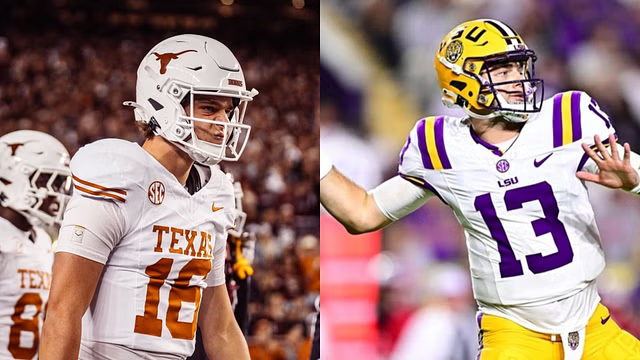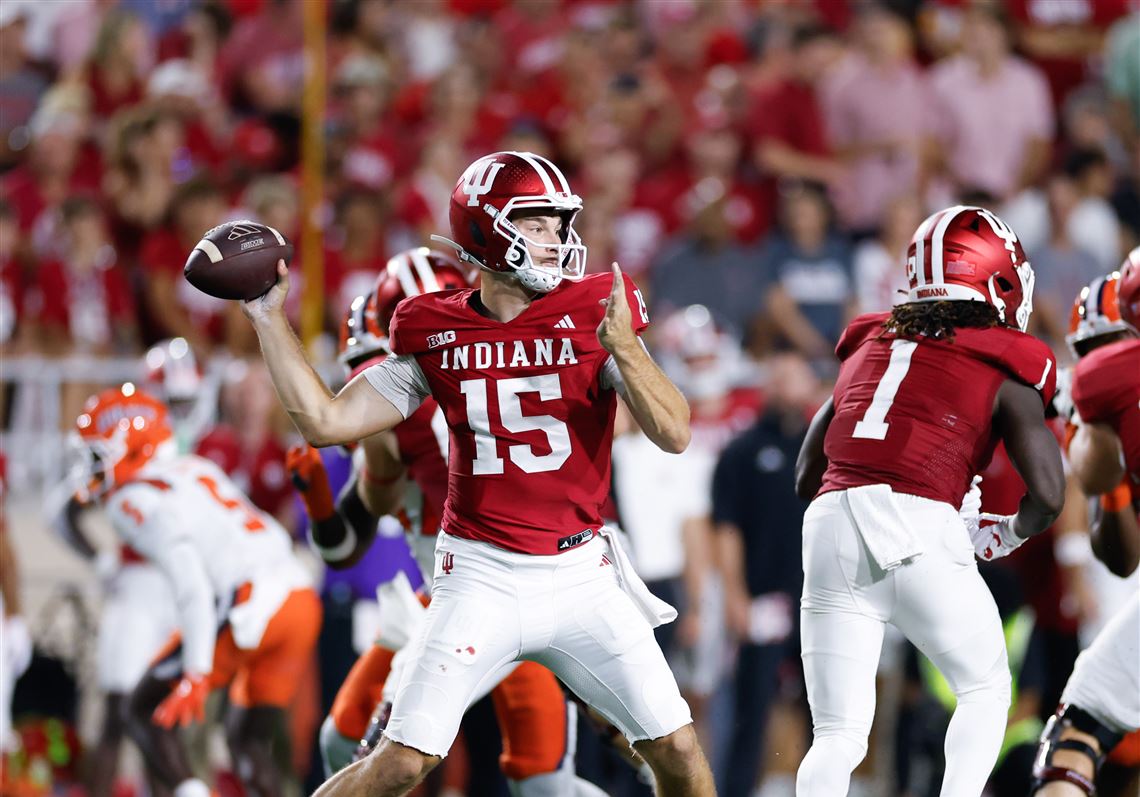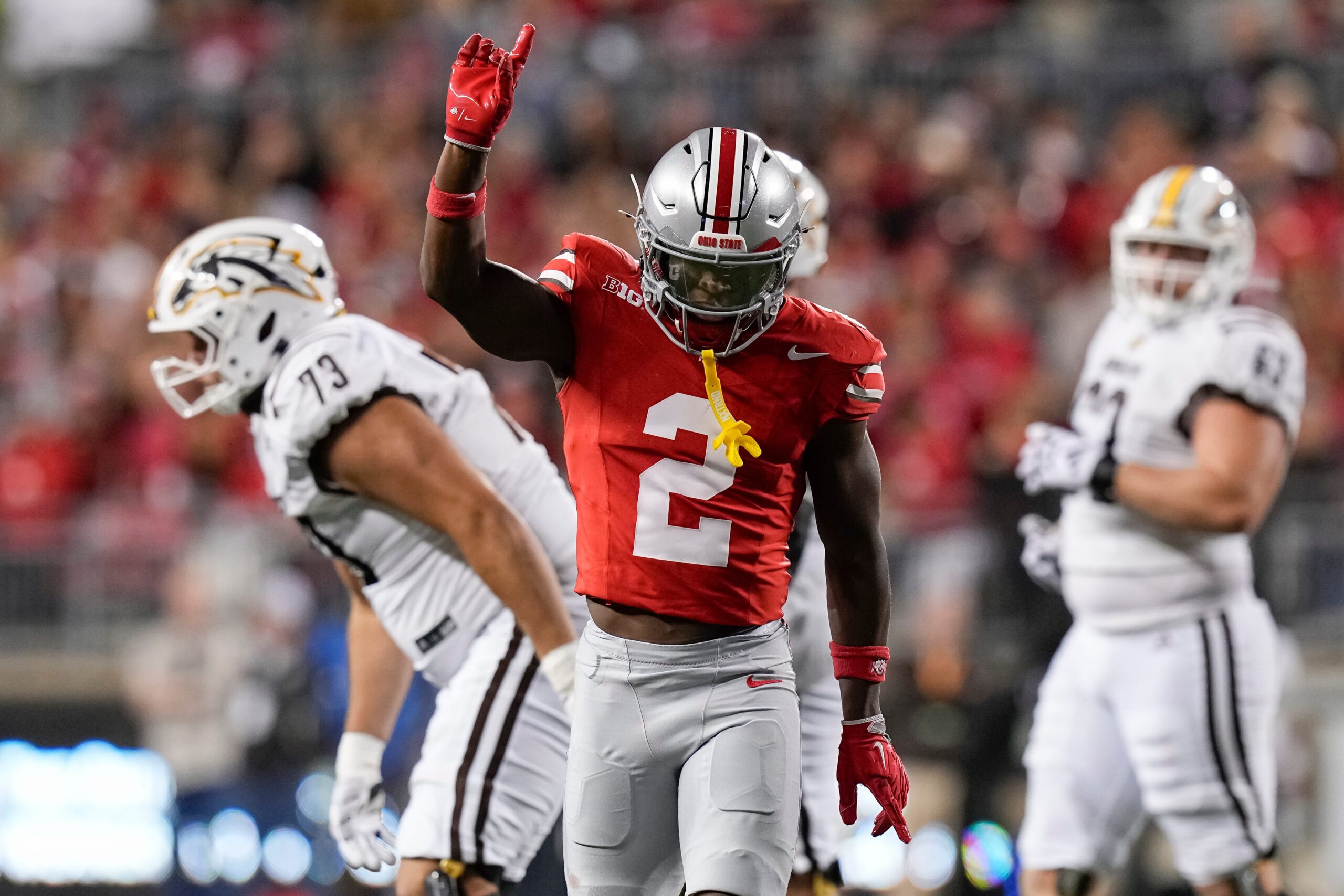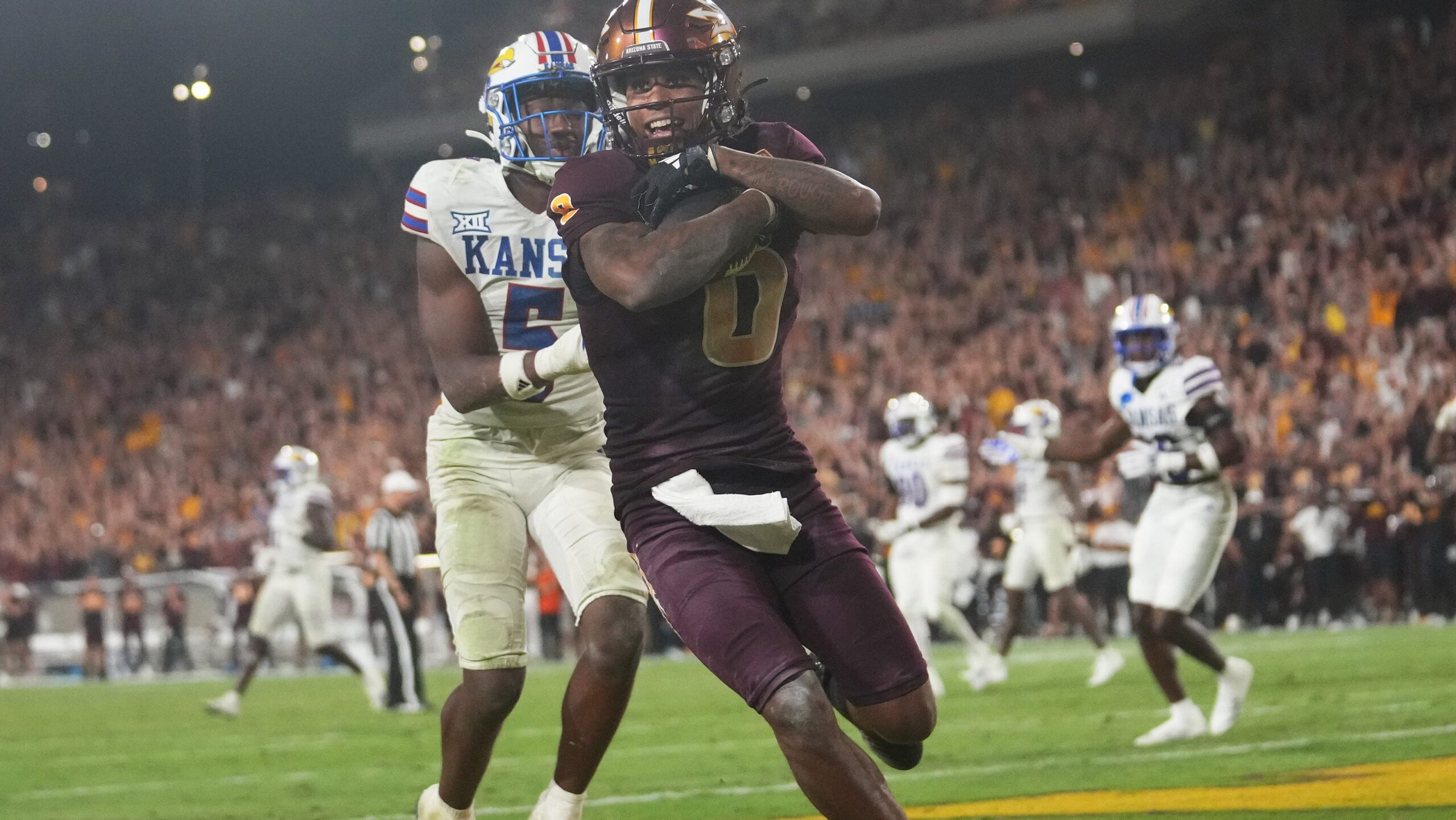By Charlie Campbell.
Send Charlie an e-mail here: [email protected]
Follow Charlie on Twitter @draftcampbell for updates.
This page was last updated March 24, 2017. Follow me @walterfootball for updates.
Position Review: Wide Receivers
Wide Receiver Class
Early-round talent: B+
Mid-round: A-
Late-round: B
Overall grade: B+
2017 prospects vs 2016
Mike Williams
John Ross
Will Fuller
Corey Coleman
Josh Doctson
Corey Davis
Laquon Treadwell
Curtis Samuel
Sterling Shepard
Michael Thomas
JuJu Smith-Schuster
Tyler Boyd
Zay Jones
Braxton Miller
Malachi Dupre
ArDarius Stewart
This year’s class of wide receivers is similar to the 2016 class in that it is good but not great. The 2014 class was legendary and 2015 was strong as well. If you were to merge the 2016 and 2017 classes, Williams would be the top receiver prospect. Ross, Coleman and Fuller are all similar. I think Ross is slightly better than that 2016 duo; however, I think that Fuller is better than Coleman even though he went later.
Josh Doctson, Corey Davis and Laquon Treadwell are all similar-caliber players as late first-round prospects. Samuel and Sterling Shepard are pretty equal as well.
In January of 2016, a scout texted me and asked whom I thought the best receiver prospect was. I answered Will Fuller and Michael Thomas; it just depended on needing a receiver with speed or size. Thomas proved me right with a excellent rookie year. As a prospect, he graded out on Day 2, but I liked him more than Treadwell, Doctson or Coleman. Smith-Schuster is underrated and a solid second-rounder like Boyd. Jones could go in the second round as well. Dupre and Stewart are behind Miller in my opinion.
The 2017 NFL Draft class has a glutton of mid-round depth at receiver. There will be some good players who emerge from a group that includes: Chris Godwin, Chad Hansen, Noah Brown, Damore’ea Stringefellow and Josh Reynolds.
Safest Pick: Corey Davis, Western Michigan

Davis is a very polished receiver who had four years of good production in college. The only concern with him is injuries and durability, but he was very consistent for Western Michigan. Davis is very impressive with excellent route-running, hands, size, quickness, and dangerous run-after-the-catch skills. Davis is a polished receiver who would be a great fit in a West Coast offense. One source compared Davis to Demaryius Thomas coming out of Georgia Tech, except Davis isn’t quite as thick as Thomas was then. I think Davis is a very safe pick to turn into a good pro receiver.
Previous Picks:
2016: Will Fuller
2015: Amari Cooper
2014: Sammy Watkins
2013: DeAndre Hopkins
Biggest Bust Potential: Curtis Samuel, Ohio State

This was a tough selection because no receiver is screaming “bust potential” to me. John Ross could have injury issues, while Mike Williams is overrated to a degree because he drops a lot of passes. However, I think both Ross and Williams will turn into quality pros. I thought of Cooper Kupp because I think he could struggle to separate in the NFL, but he’s a mid-rounder and can’t be a real bust there. I have to pick someone, so I went with Samuel even though I like him as a player.
Samuel has excellent speed and is a dangerous threat with the ball in his hands. I chose him because he is somewhat of a tweener wide receiver and running back. At 5-foot-10, 196 pounds, Samuel will have to be a speed receiver in the NFL. He runs quality routes, is sudden and has reliable hands. I chose Samuel because I could see him not finding a proper role where he yields consistent production. I could see Samuel end up being a Tavon Austin-type gadget player who never produces up to the hype.
Last year I wrote, “This wasn’t an easy decision. I considered going with Laquon Treadwell because I think he will struggle to separate from NFL cornerbacks, but Treadwell makes up for it with size, strength, winning 50-50 passes, and blocking. I chose Coleman because I see some potential flaws in his game.” Based off their rookie years, I should have picked Treadwell, but Coleman didn’t play that well either. Funchess and Benjamin haven’t been busts, while Patterson was a bust for Minnesota.
Previous Picks:
2016: Corey Coleman
2015: Devin Funchess
2014: Kelvin Benjamin
2013: Cordarrelle Patterson
Wide Receiver Rankings by Attributes
Separation:
NFL prototype: Antonio Brown, Steelers
- John Ross
- Curtis Samuel
- Corey Davis
- Zay Jones
- ArDarius Stewart
- Mike Williams
- JuJu Smith-Schuster
- Malachi Dupre
Recap: A few wide receivers coaches told me that the ability to separate from coverage is the first trait they looked for in scouting draft prospects. Ross is the best in this draft class at getting space from defensive backs. He does it with vertical speed and suddenness out of his breaks. Ross’ separation skills are NFL ready.
Samuel is similar as he has elite speed that challenges defensive backs to run with him. He is a great, fluid athlete who is tough for defenders to run with. Ross and Samuel could have issues with getting off jams at the line of scrimmage and at the top of their routes, so getting stronger would help them with that in the NFL.
Davis and Jones aren’t as fast those two, but they both have deceptive quickness. Each are good route runners who are quick and tough to cover in-and-out of breaks. They are both are receivers who can burn defensive backs running crossing routes, slants, digs and outs.
Stewart was skilled at getting separation with his quickness, route-running and intelligence. He has a knack for getting open and is very underrated in the public media. However, teams have graded him higher than other more-hyped receivers like Cooper Kupp.
Williams is a Mike Evans- or DeAndre Hopkins-type receiver. Neither Evans or Hopkins are huge separation receivers in the NFL, but they are always open because they are so tremendous at making receptions over defensive backs. Williams is the same way as he has lethal leaping ability with uncanny body control to hang in the air over defenders and make catches in front or over them. Williams has enough quickness to get downfield, and while quality college defensive backs ran with him, he would beat them by using his size on the back-shoulder catch or leaping over them. Like Evans and Hopkins, Williams also has the strength to get late separation with some subtle pushoffs. Williams won’t be a huge separation receiver, but he still will be a mismatch weapon because of his skill set.
Smith-Schuster is similar, but not as big as Williams. The big question for Smith-Schuster is the ability to get separation from NFL defensive backs. He can use his size and strength to get open late while making receptions over defenders. Dupre has good size and quickness, but separating from NFL receivers could be an issue for him.
Hands:
NFL prototype: Larry Fitzgerald, Cardinals
- Zay Jones
- JuJu Smith-Schuster
- Corey Davis
- John Ross
- Curtis Samuel
- Malachi Dupre
- ArDarius Stewart
- Mike Williams
- John Ross
- Curtis Samuel
- ArDarius Stewart
- Zay Jones
- Mike Williams
- Corey Davis
- Malachi Dupre
- JuJu Smith-Schuster
- Corey Davis
- John Ross
- Curtis Samuel
- Zay Jones
- Mike Williams
- JuJu Smith-Schuster
- ArDarius Stewart
- Malachi Dupre
- John Ross
- Corey Davis
- Curtis Samuel
- JuJu Smith-Schuster
- Mike Williams
- Zay Jones
- ArDarius Stewart
- Malachi Dupre
- Mike Williams
- Corey Davis
- JuJu Smith-Schuster
- Zay Jones
- Malachi Dupre
- Curtis Samuel
- John Ross
- ArDarius Stewart
- Mike Williams
- Corey Davis
- JuJu Smith-Schuster
- Malachi Dupre
- Zay Jones
- ArDarius Stewart
- Curtis Samuel
- John Ross
Recap: This is a nice crop of sure-handed receivers. Jones has excellent hands. I like how he attacks the football and doesn’t wait for it to come to him. Smith-Schuster has very good hands. He is strong to snatch the ball and rip it out of the air. Smith-Schuster can make some difficult catches look easy.
Davis has good hands and is very reliable. He attacks the football and is very strong to control the ball. In terms of total drops, Davis has more than some of these others, but he saw a lot more passes thrown his direction and made 332 receptions during his collegiate career.
Ross is a smaller, slot receiver, and while slot receivers can drop more passes than big receivers, but he is very reliable. It is very rare to see him drop a pass. He tracks the ball well and reels it in. Samuel is similar, but hasn’t had quite the opportunities to display as much as Ross.
Dupre and Stewart don’t have bad hands, and each one of them was reliable in college despite not getting a lot of opportunities because of their college offenses.
You might be surprised to see Williams last, but he dropped a fair amount of passes during 2016, especially early in the year. Williams will make some excellent, difficult catches, but he can drop some easy and routine passes. Improving his hands is something for him to work on in the NFL.
Deep Speed:
NFL prototype: Odell Beckham Jr., Giants
Recap: There a number of receivers in this group who have the ability to stretch the field vertically. Ross and Samuel are legit deep-threat receivers with world-class speed. There is a big dropoff after them. Ross is the most explosive receiver available and is a threat to burn double coverage on any route. He has the speed to beat double teams over the top and is a threat to score on any reception. Defenses have to account for him in the deep part of the field.
Samuel is a big-play threat as a well due to his elite speed. He also is dangerous running go routes along the sideline with elite explosiveness and fabulous first-step quickness.
Stewart can stretch defenses and can be a problem running vertically. He has quickness and elusive.
Jones has some quickness as a vertical threat in running go routes along the sideline. He can challenge teams downfield. Williams can go up to make receptions over defensive backs even when the defenders have good coverage.
Davis has some suddenness and sneaky quickness to him, but he won’t burn NFL corners with pure speed. Dupre and Smith-Schuster aren’t vertical threats to take the top off a defense. They are more of possession receivers for the NFL.
Route-Running:
NFL prototype: Julio Jones, Falcons
Recap: Route-running is a critical part of gaining separation in the NFL. Receivers who get sloppy in their routes have a hard time getting open. Extra steps allow defensive backs to maintain coverage or more time to recover. This group of eight wideouts all are quality route runners.
Davis is a very good route runner. He is sudden in and out of his breaks with quickness, and his route-running often produces separation from cornerbacks.
Ross and Samuel are very good route-runners. Their elite speed allows them to quickly get open in the short to intermediate part of the field even with defenses sending them extra attention. Ross is a smooth route runner who is good running the slants, crosses, outs and go routes. Samuel isn’t just a sprinter; he is a good route-runner who uses his great speed and suddenness to consistently get open. He is very tough for cornerbacks to cover.
Jones and Williams are good route runners who have developed their craft. They don’t take extra steps and will maintain quickness through the route.
Smith-Schuster, Stewart and Dupre are last, but none of them is a bad route runner. Smith-Schuster is pretty polished, while Stewart has good technique. Dupre ran well at LSU despite a lack of opportunities.
Yards After the Catch:
NFL prototype: Julio Jones, Falcons
Recap: The ability to turn a short reception into a big gain can make a receiver elite. Among the eight receivers above, all of them have run-after-the-catch ability, and I wouldn’t say there is one who is bad.
That being said, the top two are pretty special. Ross is fast to run away from defenders and is shifty in the open field. With his run-after-the-catch skills and speed, Ross is a threat to score on any reception.
Samuel can be electric in the open field. He has the speed and explosion to run by defenders while also having serious elusiveness.
Smith-Schuster and Williams are physical runners who can pick up yards after making a reception, but their run-after-the-catch skills could be diminished with the speed of NFL defensive backs. Still, both are dangerous to break tackles and hurt defenses on wide receiver screens.
Jones, Stewart and Dupre are solid after the catch. Jones can zig-zag through a defense and pick up yards after the catch. Stewart and Dupre are also tough wideouts who can be hard to control in the open field.
Red Zone:
NFL prototype: Mike Evans, Buccaneers
Recap: This was a tough category to rank because so many of the receivers were excellent point producers in college. That being said, Williams was tremendous in the red zone with his ability to make catches in traffic and leap over defenders. He is a phenomenal weapon on fade passes and jump balls. Williams should be an asset immediately in the NFL in the red zone.
Davis makes it safe for quarterbacks to throw high for him as it will either be a touchdown or an incompletion. He can score with contested catches or by getting open running routes. Last year, Davis had 19 touchdowns, and that was no fluke as he totaled 32 scores over the previous three years. Smith-Schuster is similar to Davis and Williams with a strong frame that leads to him winning in the red zone. Thus, he’s rated third.
Jones (6-1, 202) and Dupre (6-2, 196) aren’t physically dominating wideouts, but they have enough size and strength to win 50-50 passes. They fight for the ball and should be contributors in the red zone.
Samuel (5-10, 196) and Ross (5-11, 188) are similar in that they can help a team produce points in the red zone via separation. Ross’ scores come from further out generally. These two speed receivers are still contributors in the red zone with their quick separation skills that make them viable options to stay on the field. Stewart (5-11, 204) is another quick route runner who can contribute in the red zone but doesn’t offer size. He is a fighter though and really competes for the football.
Contested Catches:
NFL prototype: A.J. Green, Bengals
Recap: Throwing windows in the NFL are very small, and receivers have to be trusted to outbattle defensive backs for the ball. Lacking the ability to win contested catches results in more interceptions.
In terms of projecting the transition to the NFL, Williams is ranked first because he has a strong frame with height and leaping ability. He is superb at beating defensive backs for 50-50 balls up for grabs. Williams is a lot like the Buccaneers’ Mike Evans in this regard.
So is Davis, as he will beat a defensive back by snatching a pass right over him. Both Davis and Smith-Schuster are above average in height. They really fight and compete for the football. This top trio should be very good on back-shoulder throws and fade passes.
Dupre and Jones aren’t the biggest receivers, but they are feisty to win on 50-50 passes. They can be physical and have enough of height advantage and leaping ability to make contested catches.
Stewart, Samuel and Ross are tough to fight for the ball. However against bigger NFL cornerbacks, they are not going to be receivers who make a living off winning 50-50 passes.
NFL Power Rankings - Dec. 16
NFL Picks - Dec. 15
2026 NFL Mock Draft - Dec. 10
Fantasy Football Rankings - Sept. 1




